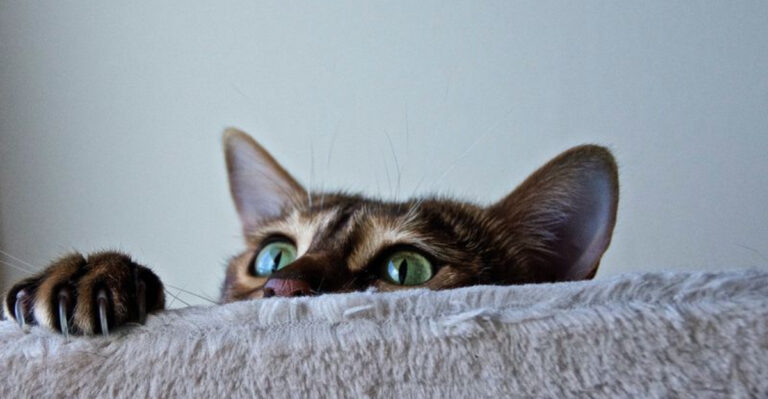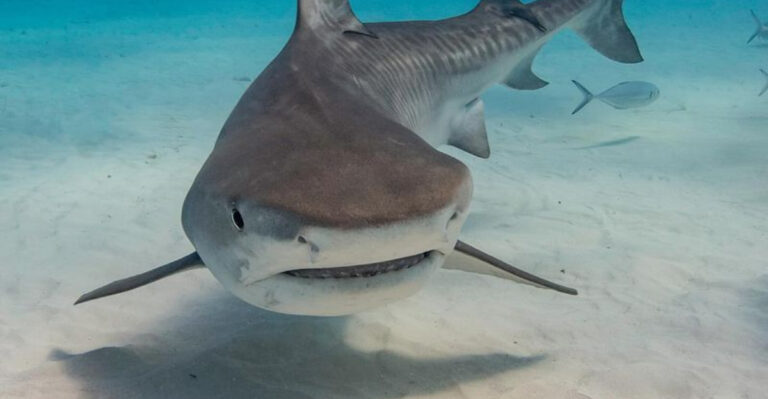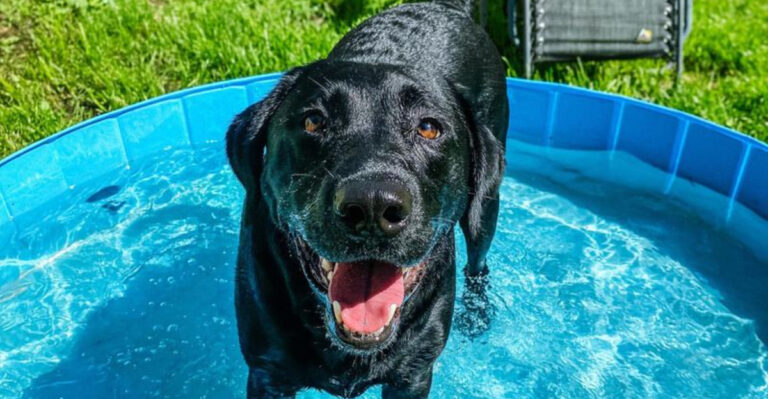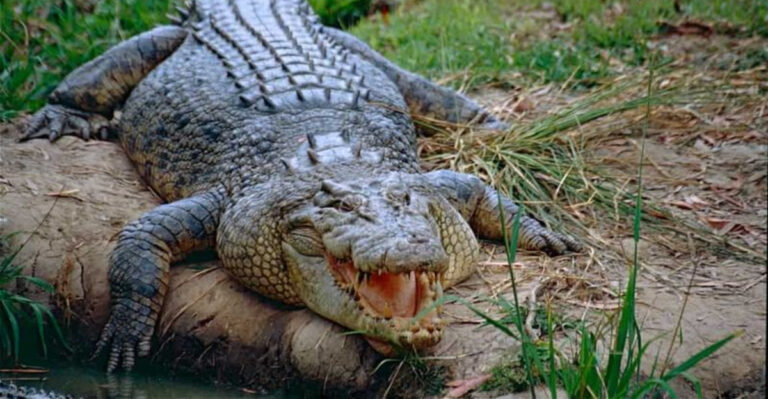12 Exotic Pets That Demand Luxury-Level Attention
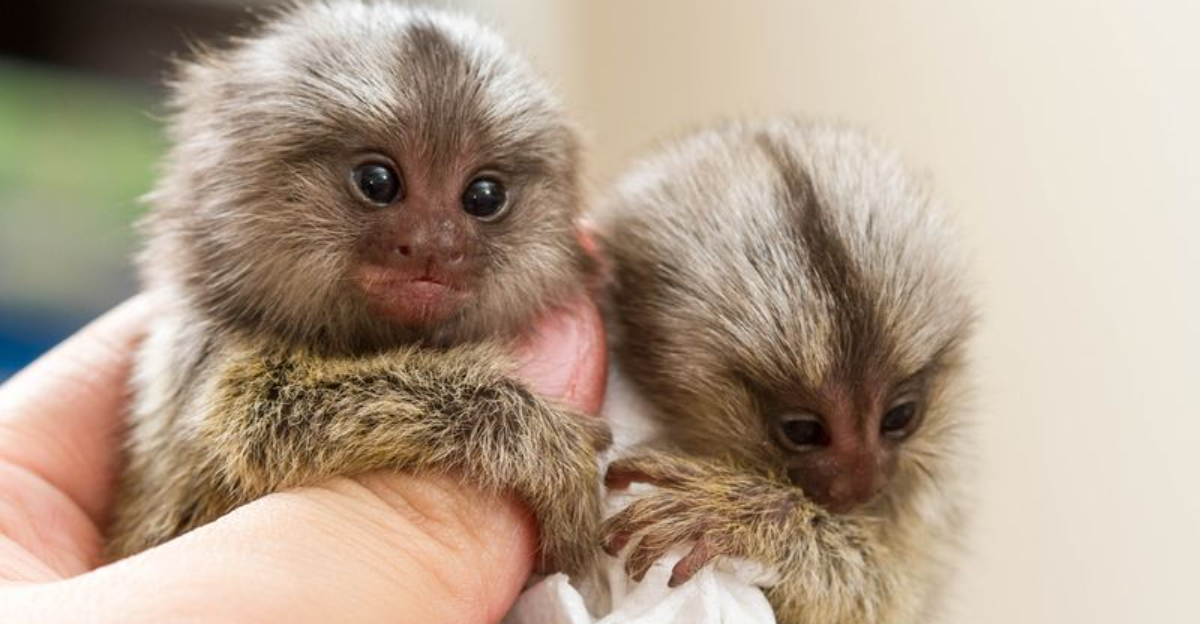
Ever wondered what it takes to care for animals that make regular pets seem like low-maintenance roommates? Some exotic creatures require specialized diets, custom habitats, and attention that rivals what celebrities expect from their personal assistants.
These extraordinary animals aren’t just unusual – they’re the divas of the pet world, demanding five-star accommodations and round-the-clock care.
Before you dream about adding one of these remarkable creatures to your home, let’s explore what makes these 12 exotic pets the ultimate luxury commitment.
1. Sugar Gliders: The Flying Fashionistas

Native to Australia, these pocket-sized marsupials glide through the air with the grace of tiny supermodels. Don’t let their adorable faces fool you – sugar gliders require a social calendar busier than most humans!
Their specialized diet includes fruits, vegetables, insects, and nectar substitutes that must be freshly prepared daily. Housing needs? Nothing less than a multi-level mansion with toys, exercise wheels, and branches for climbing.
Sugar gliders form intense emotional bonds with their owners and can literally die from loneliness if kept solo. Plan on dedicating several hours each day to bonding with these nocturnal creatures who’ll happily nestle in your pocket during daytime hours.
2. Kinkajou: The Honey Bear Socialite
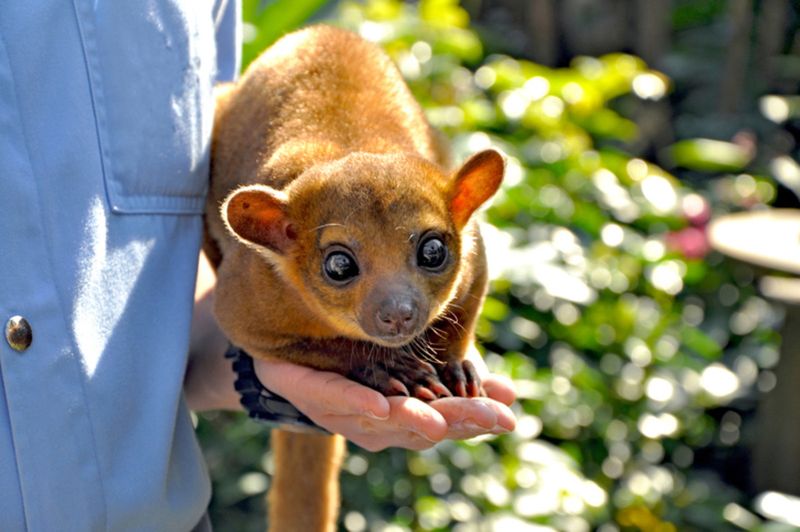
Resembling a cross between a monkey and a teddy bear, kinkajous bring rainforest charm straight to your living room. Their prehensile tails work like an extra hand, perfect for hanging upside down while raiding your fruit bowl.
Kinkajous thrive on a gourmet menu of fruits, honey, insects, and specialized pellets. They’re nocturnal party animals who sleep all day and bounce off the walls all night – literally! Your sleep schedule will need serious adjustment.
Temperature requirements rival a luxury spa: steady 75-85°F with perfect humidity. Plus, these South American natives live 20+ years, making them a longer commitment than many marriages!
3. Fennec Fox: Desert Diva With Satellite Ears

Those iconic ears aren’t just for show – fennec foxes use them to radiate body heat in their native Sahara. Keeping one happy means recreating desert conditions in your home, complete with specialized heating and deep sand for digging their complex tunnel systems.
Notorious escape artists, fennec foxes require enclosures that would challenge Houdini. Their energy level makes caffeinated toddlers seem calm by comparison – expect midnight zoomies and acrobatic jumps that defy physics.
Their diet requires careful planning: lean proteins, insects, fruits, and vegetables must be precisely balanced. Fennecs form deep bonds with owners but maintain their wild instincts, making them half pet, half untamable spirit of the desert.
4. Pygmy Marmoset: Tiny Primate, Giant Demands

Weighing less than a stick of butter, these finger-sized monkeys pack enormous needs into minuscule packages. Marmosets communicate through high-pitched calls that sound like alien transmissions – charming at noon, less so at 3 AM!
Their habitat requirements would impress an interior designer: custom-built enclosures with multiple levels, temperature controls, and humidity systems. Diet-wise, they’re extremely particular, needing specialized marmoset gum, insects, fruits, and protein sources.
Veterinary care presents another challenge – finding an exotic animal specialist who understands these tiny primates isn’t easy or cheap. When marmosets bond with owners, they expect to be part of every family activity, riding on shoulders like miniature supervisors.
5. Slow Loris: Deceptively High-Maintenance Cuddle Machine

With eyes that could melt the coldest heart, slow lorises move at their own pace – which is, unsurprisingly, slow. Don’t be fooled by their seemingly low-energy lifestyle; these primates have complex needs that few owners can satisfy.
Lorises require specialized arboreal habitats with perfect temperature and humidity control. Their venomous bite (yes, really!) means handling requires expertise and caution. Their nocturnal nature means they sleep all day and need attention when you’re ready for bed.
Finding legal specimens is nearly impossible as they’re protected internationally. Most pet lorises have had their teeth painfully removed to prevent biting. Their specialized diet of tree gum, nectar, and insects must be meticulously prepared and varied.
6. Axolotl: Underwater Alien Requiring Scientific Precision
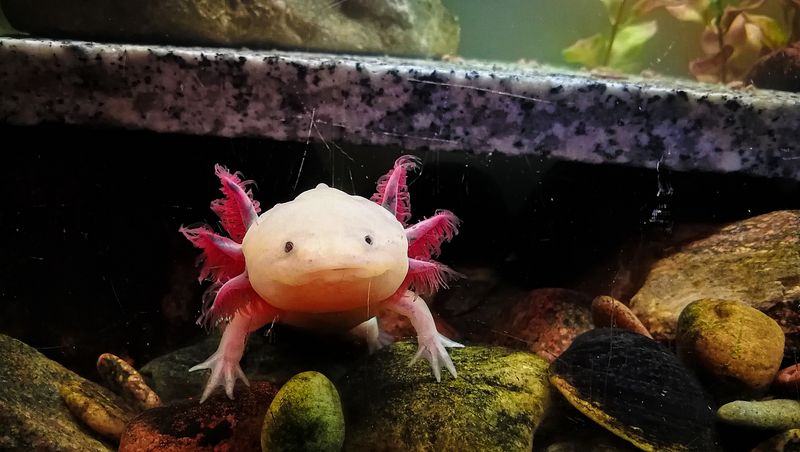
These smiling salamanders never grow up – axolotls remain in their larval stage forever, sporting external gills that look like fancy headdresses. Their aquatic environment demands laboratory-grade precision: water parameters must be monitored daily with specialized testing equipment.
Temperature control is critical – axolotls need consistently cool water between 60-64°F, often requiring chillers in warm climates. Their tanks need specialized filtration systems that create minimal current, as these Mexican natives are surprisingly delicate swimmers.
Feeding presents another challenge: live blackworms, specially sized pellets, and occasional treats must be carefully measured. When sick, axolotls require exotic animal veterinarians with amphibian expertise – a rare and expensive specialty that might require traveling hours to find.
7. Pangolin: The Walking Pinecone With VIP Needs
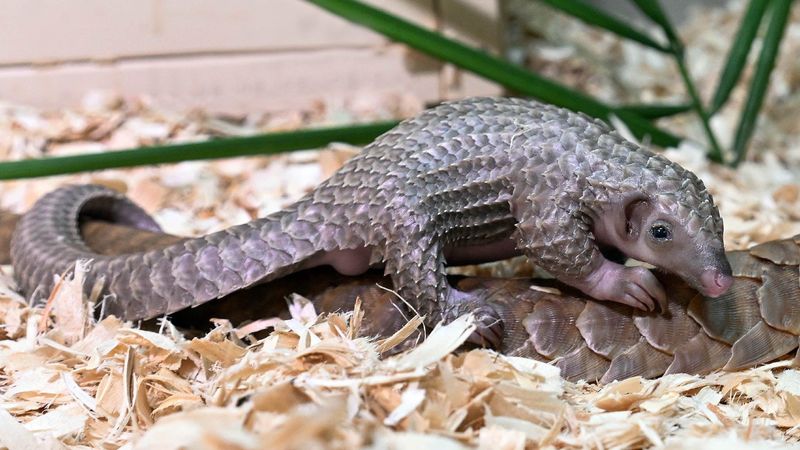
Resembling artichokes with legs, pangolins are the world’s only scaled mammals. Their specialized diet consists almost exclusively of ants and termites – up to 70 million annually! Maintaining live insect colonies just to feed your pet requires dedicated space and systems.
Housing pangolins means constructing environments with multiple temperature zones, humidity controls, and specialized digging substrates. They require regular veterinary care from specialists in endangered species – good luck finding one nearby!
Most critically, pangolins are severely endangered and protected internationally. Legal ownership is virtually impossible, and the black market trade threatens their survival. Instead of ownership, consider supporting pangolin conservation efforts to protect these extraordinary animals in their natural habitats.
8. Capybara: Giant Rodent Requiring Backyard Waterpark
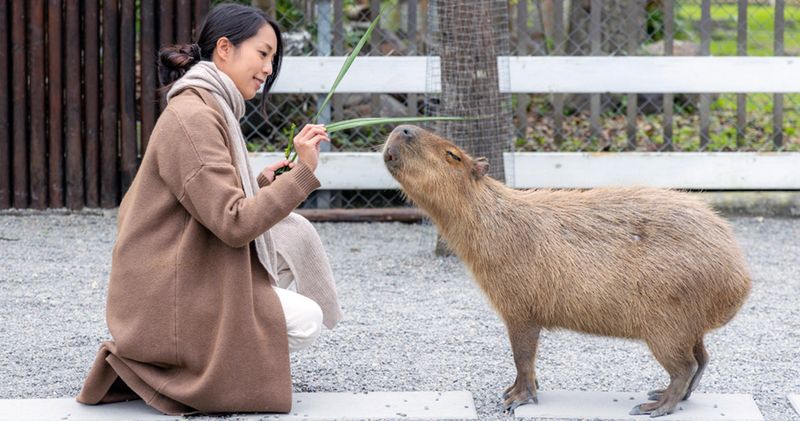
The world’s largest rodents bring South American charm and spa-level water requirements to your backyard. Standing two feet tall at the shoulder, these gentle giants need space – lots of it. Forget standard pet enclosures; capybaras require yard space measured in acres.
Their semi-aquatic nature demands a swimming pool or pond deep enough for complete submersion. Water quality must be monitored as carefully as a human swimming facility. Diet maintenance involves fresh grasses, vegetables, and specialized hay daily.
Capybaras are intensely social, requiring either capybara companions or constant human interaction. Their teeth grow continuously, necessitating special chewing materials and regular dental checks. In many states, permits rival those needed for opening a zoo – with annual inspections and insurance requirements.
9. Hyacinth Macaw: The Sapphire Apartment Demolisher
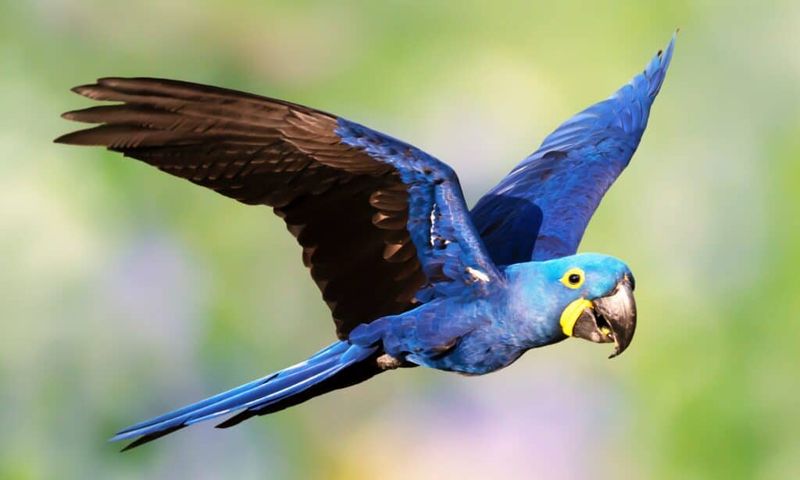
Draped in electric blue feathers, these stunning parrots are living jewels with price tags to match – often exceeding $15,000. Their housing requirements would impress an architect: flight cages measuring at least 8 feet in all dimensions with reinforced steel bars to withstand their industrial-strength beaks.
Hyacinth macaws can crack Brazil nuts with their beaks – imagine what they can do to your furniture! Their diet requires fresh nuts, fruits, vegetables, and specialized pellets prepared daily. Intellectual stimulation demands dozens of rotating toys and several hours of direct interaction.
With 70+ year lifespans, adopting a hyacinth macaw means creating provisions in your will for their care. Their powerful vocalizations can reach 105 decibels – comparable to standing next to a chainsaw during your morning coffee.
10. Two-Toed Sloth: The Slowest Diva On Earth
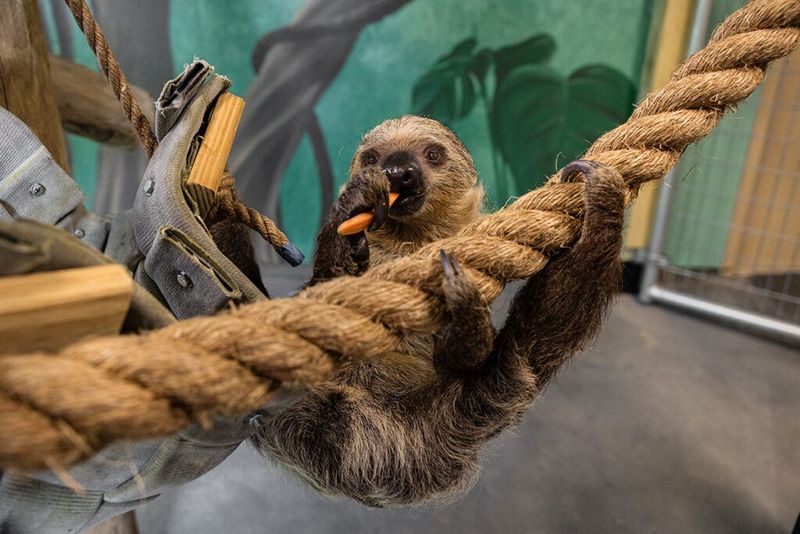
Moving at a maximum speed of 0.15 mph, sloths bring rainforest zen to the extreme. Their specialized digestive systems process food at glacial speeds – a single leaf can take a month to digest! This means their diet must be meticulously balanced and monitored.
Temperature and humidity control rivals weather stations – sloths need constant warmth and moisture to prevent respiratory issues. Their custom habitats require complex branching systems for proper movement and hanging, as sloths spend life upside-down.
Weekly baths are necessary despite their slow movement, as their fur hosts entire ecosystems of algae and moths. Finding veterinary care presents enormous challenges – few vets understand their unique physiology. Most importantly, sloths suffer tremendous stress in captivity, often developing anxiety and depression despite owners’ best efforts.
11. Japanese Spider Crab: The Underwater Giant Requiring Ocean Simulation
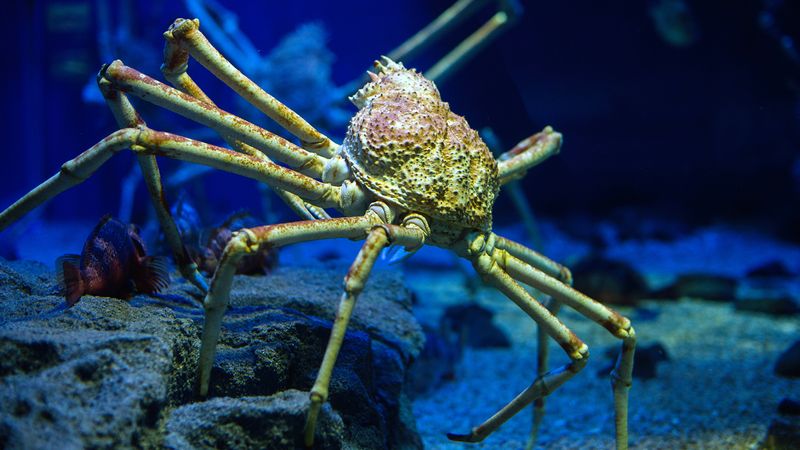
With leg spans reaching 12 feet, these ocean behemoths need aquariums that dominate entire rooms. Their specialized habitats must recreate deep ocean conditions with precise pressure, temperature, and current controls that rival professional aquariums.
Water chemistry requires daily testing and adjustment with laboratory-grade equipment. Filtration systems cost thousands and consume electricity like small factories. Their diet includes fresh seafood varieties that would impress gourmet restaurant patrons.
Finding veterinary care for exotic marine invertebrates means developing relationships with marine biology researchers. Most critically, these majestic creatures typically live in ocean depths of 1,000+ feet, making ethical ownership nearly impossible for private individuals. Consider supporting public aquariums instead, where professional staff can provide proper care.
12. Serval: The African Spotted Cat With Hollywood Demands
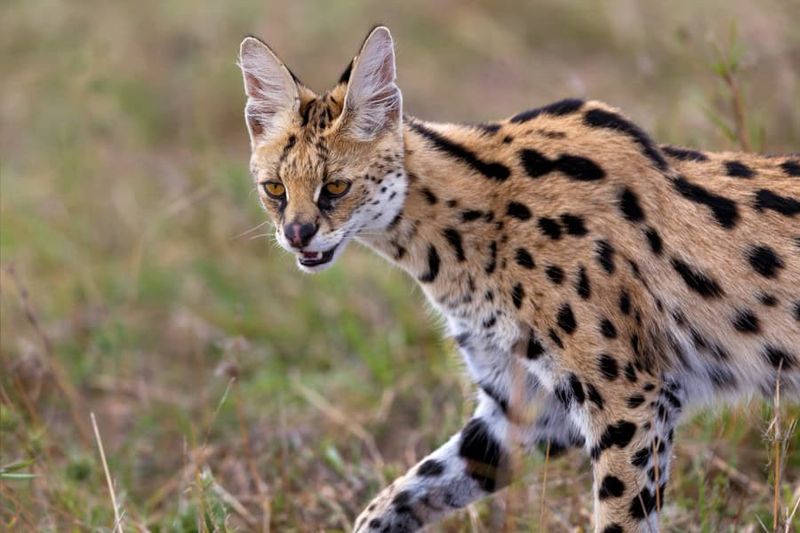
Standing 24 inches at the shoulder with legs like supermodels, servals bring wild Africa straight to your living room – along with their wild needs. Their enclosures require at minimum 1,500 square feet with 10-foot walls, heated shelters, climbing structures, and pools.
Servals jump 10 feet vertically from a standing position, making escape prevention a constant challenge. Their diet includes whole prey items (rabbits, birds, rodents) that must be sourced from specialized suppliers. Daily enrichment activities must stimulate their natural hunting behaviors.
Legal ownership requires exotic animal permits that vary by state, with many prohibiting serval ownership entirely. Their veterinary care demands specialists in exotic felines, often located hours away and charging accordingly. Despite extensive socialization, servals retain wild instincts that can emerge unpredictably.


